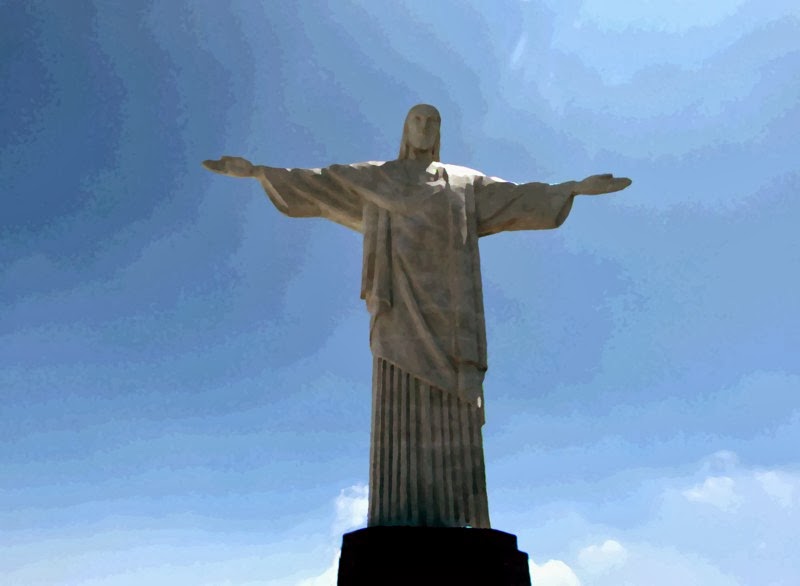Fiction

- Details
- Written by: Richard_McKie
- Parent Category: Ideas
- Category: Fiction
- Hits: 48906
How I miss Rio. Rio de Janeiro the most stunningly picturesque city on Earth with its dark green mountains and generous bays, embelezado with broad white, sandy beaches. Rio forever in my heart. Rio my a minha pátria, my homeland, where I spent the most wonderful days of my life with linda, linda mãe, my beautiful, beautiful mother. Clambering up Corcovado Mountain together, to our favela amongst the trees.
Thinking back, I realise that she was not much older than I was, maybe fifteen years. Who knows?
Her greatest gift to me was English.
- Details
- Written by: Richard_McKie
- Parent Category: Ideas
- Category: Fiction
- Hits: 14979
It was hot, dry and dusty when they finally arrived in Jaisalmer. But then, how often is it not hot and dusty here?
In the markets a wizened woman, of indeterminate age, is using a straw broom to aggressively sweep the area in front of her shop. The dust will soon be kicked-back by passers-by; or swept back by her neighbours; requiring her to sweep again, and again. She will do the same again tomorrow; and the day after; and the day after that.
Jennifer's mind is elsewhere. She's has dreamt of visiting exotic India ever since a client at the hairdressers told her, with enthralling details, of her adventures here.
They've arrived in the dusty city late in the afternoon, by road from Jodhpur. In spite of his preference to visit California or Las Vegas again, she's finally persuaded Bruce that he might like India. He should try something a bit more adventurous for a change.
Below the entrance to the famous Jaisalmer Fort, is a small square that marks the start of the road winding up, then turning at right-angles, through the protective elephant-proof gates. In this little square, motorised trishaws: Tuk-tuks, jostle restlessly like milling cattle. They are waiting for tourists, like our travellers, who may hire them tomorrow to see the town or, if they are lazy or tired, just to mount the steep hill up to the Fort.
- Details
- Written by: Richard_McKie
- Parent Category: Ideas
- Category: Fiction
- Hits: 147239
Chapter 1 - The Party
This morning Miranda had an inspiration - real candles! We'll have real candles - made from real beeswax and scented with real bergamot for my final party as a celebration of my life and my death. This brief candle indeed!
In other circumstances she would be turning 60 next birthday. With her classic figure, clear skin and dark lustrous hair, by the standards of last century she looks half her age, barely thirty, the result of a good education; modern scientific and medical knowledge; a healthy diet and lifestyle and the elimination of inherited diseases before the ban on such medical interventions.
It's ironical that except as a result of accidents, skiing, rock climbing, paragliding and so on, Miranda's seldom had need of a doctor. She's a beneficiary of (once legal) genetic selection and unlike some people she's never had to resort to an illegal back-yard operation to extend her life.
- Details
- Written by: Richard_McKie
- Parent Category: Ideas
- Category: Fiction
- Hits: 15901
Lansing Michigan was a fine place to grow up, she guessed. It was nice; and safe.
Her dad worked in the Michigan State Government and her mum stayed home. They weren’t rich but they were comfortable. Their new house was big, the nicest they had lived in and it was in a really good area.
She had never been overseas, unless you count nearby Canada, and that was mainly on trips to Niagara Falls, usually when one of Mum’s sisters came to stay. When they passed through Sarnia, into Canada, Dad would always say "Yea! Overseas again!". It was about his only joke.
Sometimes they went through Detroit. But after what had happened there the last time, she shut that out of her consciousness. No wonder she is timid and takes fright easily. Now if a friend even seemed to be driving in that direction she would go into the foetal position and shut-down.
